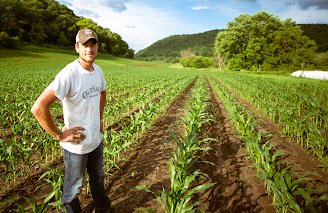By Steven WaldmanPresident of Rebuild Local News and co-founder and president of Report for America
In announcing the sale of its Pennsylvania newspapers to Alden Global Capital last week, the Lynett family — which had owned the papers for 128 years — gave this
heartbreaking statement:“Most family newspaper sale announcements bear some variation of stock language regarding the new owner’s ability to ‘assume the families’ stewardship,’ ‘continue to provide strong local reporting,’ and ‘maintain the legacy’ of the selling family. Sadly, we feel that none of that will be true in our case.”
According to press accounts, the family members that were operating the papers didn’t want to sell to Alden but were outvoted by the other family members. Whatever the internal dynamics, it seems clear they would rather have had other options. Instead, the newspapers for Scranton, Wilkes-Barre, Hazleton and Pottstown will now, almost certainly, become worse — and ultimately those cities might become news deserts.
We all love to complain about how Google and Facebook are killing local news.
And they certainly have contributed to the problems. But what we have in Pennsylvania is cannibalism — one part of the local news industry eating another.
Until we face up to this problem, we’re not going save local news — and frankly won’t have much moral claim to do so.
While we are thrilled at the arrival of several hundred new startups, mostly nonprofit, there are 6,000 newspapers out there — many of which are small, family-owned papers that would rather not sell to Alden but are finding themselves with few choices.
Half of the daily newspaper circulation in America is now owned by hedge funds or private equity firms.
Studies (and our own eyes) have shown that when financial firms like Alden buy local newspapers they cut local reporting staffs far more than family papers or nonprofits do.
Rebuild Local News called on the Federal Trade Commission and the U.S. Department of Justice to regulate acquisitions exactly like these. In its proposal it recounted the evidence:
A
recent study by Michael Ewens, Arpit Gupta, and Sabrina T. Howell found that newspapers acquired by private equity firms were more likely to cut the number of reporters and the amount of local coverage. “The composition of news shifts away from local governance, the number of reporters and editors falls, and participation in local elections declines,” they concluded.
The number of reporters fell from 6.2 to 3.8 at newspapers that were acquired by a private equity firm. By comparison, for other types of newspapers, the number of reporters fell far more modestly, from 7.3 to 6.1. The number of editors at these papers fell from 9.1 to 6.1, compared to a drop of just 5.7 to 5.4 at other papers.
The number of articles about local government at newspapers acquired by private equity firms fell from 5,700 to 2,500 after an acquisition, “a significant negative effect.” For those newspapers not owned by private equity firms, the drop was smaller, from 5,200 to 4,400. They even found that these changes in coverage led to lower voting turnout and a greater percentage of residents having no opinion about their member of Congress.
By contrast, the study showed that family-owned newspapers were more likely to maintain higher levels of local news coverage and reporting staffs.
Another study by Benjamin LeBrun, Kaitlyn Todd and Andrew Piper looked at 130,000 articles at 31 corporate-owned local newspapers. They concluded that “corporate acquisition leads to a significant reduction in the amount of local news disseminated by affected publications.”
In Maine, Reade Brower faced a similar prospect as the family in Pennsylvania. He owned the largest collection of papers in the state. He wanted to keep the papers in local hands but needed to sell, and there was a real chance there’d be no other option besides Alden. In that case, a
group of local civic leaders teamed up with a national organization working in this field, the National Trust for Local News, to acquire the papers.How can we have more Maine outcomes and fewer Scranton outcomes?
We need a one-two punch of public policy and philanthropic creativity.
First, there needs to be a fund that can help ensure that local newspapers stay in local hands — and, if possible, that chain newspapers can get “replanted” back into communities.
Such a fund — probably set up by philanthropy — can provide low-interest loans or grants to local players to bid on the papers that are able to be saved (not all are; we need to be clear-eyed about that).
In other cases, such a fund could purchase papers itself as a short-term step with an eye toward replanting. That might be done through the National Trust for Local News (full disclosure: I’m a cofounder) or some other entity.
But this is not likely to work without government support. At Rebuild Local News we have proposed a four-part plan:
1) Provide tax incentives or grants for nonprofits or public benefit corporations that want to buy a newspaper to keep it locally controlled or owned
2) Provide tax incentives for newspaper owners wanting to sell their papers to such local entities
3) A requirement that before a newspaper can be sold to an out-of-town company, there must be a 120-day waiting period to help local buyers come up with a bid
4) Antitrust regulators need to start looking at cases in which hedge funds or private equity firms are acquiring newspapers
One could also argue that the longer-term fix is a different set of public policies that lift up the floor for the whole local news business. For instance, a refundable tax credit for news organizations to hire or retain reporters would help the whole ecosystem — as would a tax credit for small businesses that advertise with local news.
But we can’t keep celebrating the rise of a few dozen awesome new nonprofits while ignoring the community-by-community cannibalization of so many small newspapers.























